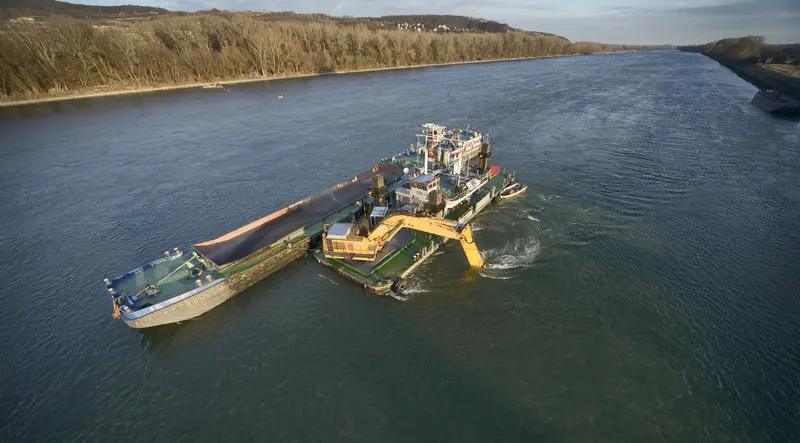The maintenance of the international Danube waterway is carried out by making optimal use of resources with the greatest possible degree of efficiency and effectiveness regarding the implementation of maintenance works and taking into account the prevailing conditions (e.g. limited market capacity in hydraulic engineering or budgetary guidelines as laid down by the federal government).
viadonau has adopted a proactive approach in its efforts to ensure the provision of internationally specified fairway parameters on the Austrian section of the Danube. The objective is to ensure that the shallowest sections of the river are maintained and in good condition prior to the onset of the annual low water period in autumn. For both ecological and bedload management reasons (degradation of the riverbed), all dredged material is returned to the river, being either dumped in the river, used for structuring the riverbanks or for landfill on islands. Maintenance dredging doesn't only take place in the fairway but also beyond its limits, including approaches to ports, landing stages (e.g. also in backwaters), the approach to locks and waiting areas for vessels.
All such measures are carried out in close coordination with the other relevant organisations responsible for the maintenance of waterway infrastructure on the Austrian Danube. These include the Verbund Hydro Power GmbH, the public Danube ports and the City of Vienna (MA 45 - Water Management Authority) .
Maintenance measures also need to be taken, when necessary, on the hydraulic structures used for low water regulation. These include groynes, training walls and bottom sills. The planning and implementation of maintenance measures is conducted in close coordination with the teams from the Integrated River Engineering Project and Environment / Ecology at viadonau.
